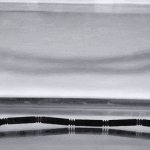
A new grant from the U.S. Army Research Office will split $855,000 between three research teams working on so-called "4D printing." By military budget standards, that’s chump change—but it hints at a huge future for a technology that’s been lingering on the horizon for years.
After all, this is the same tech thatMcSweeney’s writer Michael Ward recently skewered with a piece about myopic scientists developing 8D, 9D, and 11D printing. Perhaps because of its name, or perhaps because it’s so nascent, it’s tough to get a grip on what engineers even mean when they talk about 4D printing. In essence, the “fourth dimension” represents change—4D printing simply refers to printers that create objects that can transform over time and, in some cases, self-assemble.
Which is why the Army is so keen on it. We already know that the Navy is testing the possibility of 3D printing ammunition and UAVs onboard their ships. Part of what’s holding them—and 3D printers in general—up is the conundrum of assembly. You might be able to print complex parts en masse, but it often takes hours of manual labor to actually assemble them. 4D printing seeks to develop materials and printing techniques that cut that issue out of the equation.
Assembly is only the beginning: As the recipients of the Army grant explain, 4D printer materials are also designed to adapt to specific conditions on command. “If you use materials that possess the ability to change their properties or shape multiple times, you don’t have to build for a specific, one-time use,” said Jennifer Lewis, a professor at Harvard (one of three grantee schools, alongside University of Pittsburgh and University of Illinois), in a press release. “Rather than construct a static material or one that simply changes its shape, we’re proposing the development of adaptive, biomimetic composites that re-program their shape, properties or functionality on demand, based upon external stimuli,” added Anna C. Balazs, a chemical engineering professor at University of Pittsburgh.
Imagine a 3D-printed textile that could adapt to camouflage a soldier in different environments (or hide them by bending light!). Or a metal that adapts to environmental conditions to improve the performance of a tank or truck. Skylar Tibbits, a leader in the 4D printing movement (who, as Core77 points out, was left out of the Army grant), has had luck printing materials that respond when they’re immersed in water—for example, a flat piece of plastic that folds into a box, or the flexible chain that morphs into a rigid structure seen in the GIF above.
Now extrapolate that concept a few decades down the road. The military could flat-pack a shelter that springs into place by getting it wet, or develop bridges and temporary roads made from materials that expand to heal damage and cracks. And so on. Though it’s easy to imagine the possibilities for these smart materials, there’s still a disconnect between the concept and real-world examples of it. This new grant, however small, will likely help to bridge that gap. For more on 4D printing, check out Tibbits’ TED Talk on the subject from earlier this year. [University of Pittsburgh via Core77]
Source: Gizmodo.com